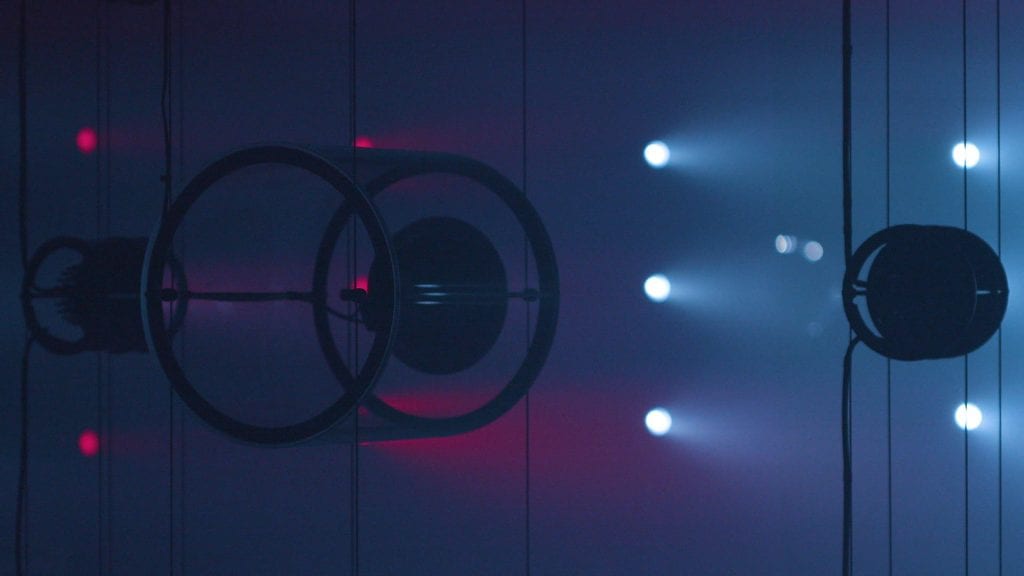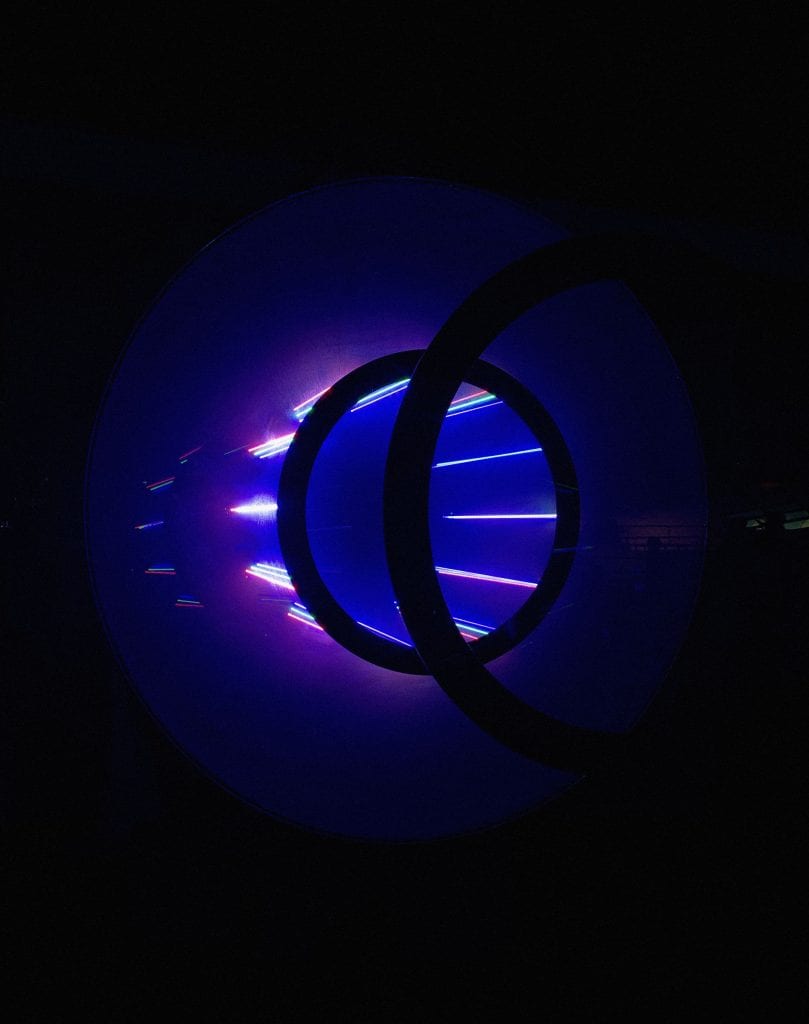
In Our Mind’s Eye
As an artist I create installations that combine sound, light and technology to reveal phenomena that shape our perception. I work in many different contexts, from museums and galleries, to public space and live performance and my experience in each of these greatly influences the way I approach the others. With this in mind my focus as an immersion research fellow was the line between observation and experience, and how technology influences our relationship with the world around us and each other.
I create installations as instruments to explore ideas, often translating them into spatial experience. Following this approach, discussions and research during this fellowship informed the development of a new audio-visual work In Our Minds Eye.
The starting point for this installation was to consider the apparent limit of human senses and how we use technology to expand this field. The installation explores the notion that a huge percentage of reality consists of what we cannot observe and only see in our minds eye.
The thinking here is on one hand in reference to objects or phenomena too small, too large, or too far away. On the other, in reference to those right in front of or around us that we simply cannot see or that our brain filters out as perhaps deemed unnecessary for survival.
This installation focuses on human vision and how it has evolved based on our environment to be centred around three distinct colour bands – red, green and blue. It’s for this reason that digital screens are designed to be comprised of grids of red, green and blue light diodes, which are mixed together to create the impression of 16 billion colours (well, in the case of 24-bit). Meanwhile digital cameras utilise red, green and blue light sensors arranged in grid arrays to detect and convey image data.
In Our Minds Eye is inspired by the resulting feedback loop created between man and technology – how these technologies, invented based on human perception, in turn influence and change how we see and experience the world.
The work is designed to de-construct this mechanism in two parts: [a] a light sculpture in a vitrine that can only be viewed from the outside, and [b] an audio-visual installation in a black-box gallery space which the viewer is invited to enter.
![View: light sculpture [a]](data:image/gif;base64,R0lGODlhAQABAAAAACH5BAEKAAEALAAAAAABAAEAAAICTAEAOw==)
View: light sculpture [a] ![View: Installation [b]](data:image/gif;base64,R0lGODlhAQABAAAAACH5BAEKAAEALAAAAAABAAEAAAICTAEAOw==)
View: Installation [b]
Together these works invite you to draw a line between observation and experience. In the case of the light sculpture [a], which is effectively a light drawing of the installation inside, you are only able to observe from one side. Apart from the parallax effect you get by walking past it, the effect is not dissimilar to looking at a screen. For the installation [b] you have a choice: to stand outside the perimeter and observe others from outside, or to enter and experience it for yourself.

In Our Mind’s Eye
In opposition to so much of today’s technology that is increasingly complex and opaque to us, all of the physical components of the installation are custom made by hand and designed to be transparent to the viewer. Lighting circuit boards are left exposed and speakers are held in cast acrylic tubes, all suspended on thin wires in an effort to create a sense of openness.

In Our Mind’s Eye
Inside, the installation uses light and sound to occupy the surrounding space. A 360 array of lights and speakers creates a sequence that begins with a single point of white light, expands to a circular field, and sub divides into colour components of red, green and blue. The installation scans through frequency bands of light and sound to reveal how these change your feeling of the space, and eventually appears to be digitised into fields of data rather than the original light that we started with.
Meanwhile a flat, central disc of prismatic material refracts light in such a way as to transform points into circular waves and divide it into its spectrum. Creating a physical reference frame for the digital animation around the perimeter and a nod to the wave-particle duality of light itself. The central object of the installation provides a focal point but is also a red herring, as the experience is more of a result of the surrounding light and sound.

In Our Mind’s Eye



![View: light sculpture [a]](https://www.swctn.org.uk/wp-content/uploads/2019/11/2-1024x584.jpg)
![View: Installation [b]](https://www.swctn.org.uk/wp-content/uploads/2019/11/3-1024x584.jpg)


